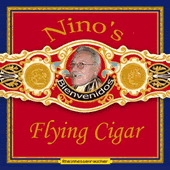MRN – Techical Data For Steve Oz Cuban And Others
8 Jan
 From Steve Oz Cuban :
From Steve Oz Cuban :
Hi Nino
I would once again like to thank you, for your continuing posts on the ongoing development of Dr MRN’s book.
As you know I have been following this book on both a professional and a personal level.
I cannot begin to imagine the drive and personal effort involved in this project, one question I do have, do you know if the good Dr is using AM or FM screening the later (more commonly known as Stochastic ) as FM screening give much more professional results, but is much harder to implement.
I to like many others would love to own a copy of this book as well, because I love books and if I was lucky enough to eventually own one, having no Kids I would gladly donate it to the State library, so it can be preserved for future generations (after I am dead of course )
I completely understand that MRN’S is not doing this for personal profit, even though he has outlayed a considerable sum of money, to me he seems to creating a Tome a precise and indomitable record for future generations, before all this knowledge is lost forever.
A MRN Opus if you will
Some books are expensive and the higher the quality the more expensive they usually are, this is generally not price gouging, but quality comes at a price (good quality printing cost money)
Like you also said, and what I know only to well books go through many print runs, and this would probably no exception
I would also recommend that MRN also submits this for a “Benny” which is an international award for printing excellence named after Benjamin Franklin.
Finally I dip my hat to MRN not only from a cigar lovers point of view, but from a craftsmenship point of view, printing world wide is facing a crisis from the digital threat which is cheaper, but IMHO not a scratch on offset for quality, there is no pride in pushing a button it all about Blood sweat and tears
Thanking you once again Nino and a special thanks to MRN for caring enough to share this with world
Steve
———-
Dear Steve,
I very much appreciate you taking the time for such an extensive and personal comment on the project, as I know you have the professional interest in this and the necessary inside knowledge of printing techniques to be able to judge it from the printers perspective !
As to your tecnical question ; I will forward it to the good doctor and you will receive the answer asap from me ( might take a few days, I’m off to Asia again in 2 days ).
You’re quite right on the reasons for the creation of this book – it is to preserve cigar history and keep it alive, along with passing on the immense cigar and historical knowledge accumulated by MRN.
He absolutely shares your opinion on the value of books for mankind and that is the reason for his challenging endeavour.
Never heard of the “Benny” but will look it up – good suggestion.
I will pass your comment to MRN.
Thank you again, Steve – have a good Sunday evening down-under !
Nino
——–
From MRN on 07.01.2013 :
As for Steve “OzCuban’s” comment. This is my reply :
Hi Steve,
Many thanks for the input from a professional printer like yourself. I am just a know nothing amateur when it comes to printing books. The book is produced as a join effort from many veterans in the Hong Kong printing industry. Some of these veterans have worked for so long that they are now semi-retired.
To answer your questions.
I use FM. The technique is not new. In practical use since the 1990s. 8 x 10 films and drum scanners have existed for over 100 years. 350 line screen offset printing is also nothing new.
But using FM 350 line screens (the rough resolution equivalent in AM terms as AM and FM are totally different animals), 8 x 10 films, and drum scanner together is only possible about 4 years ago. As FM needs much more computations than AM.
A printing machine which can handle such massive computation power and to out-put such microscopic details was launched by Heidelberg about 4 years ago. This coincided with the total abandonment of traditional films for commercial use.
Can digital ever surpass 8 x 10 films? My answer is never. Those who are in the know understand the “why”. The public will never hear this as in any commercial business, “no-money-no-talk”.
The only Company which still makes 8 x 10 films is Fuji. Production can stop at any time because of increasingly dramatic drop in sales each year.
The MRN book might very well be one of the last attempts in any books to do it before Fuji 8 x 10 film stops production. One of the reasons of doing the book is for the historical record to prove that zenith of printing resolutions arrived in the early 21 Century but quickly becomes extinct because of the demise of 8 x 10 films.
No one I know has done a book like this because it is not commercially viable. Why? No one cares about maximum quality any more. “Enough” is now the printing industry’s standards.
FM is already very difficult to do at any level of resolutions. Printing a book of such at-the-top-limit-resolution I am walking into an uncharted territory. There is practically no margin for errors. I am the one who bears the cost of unsatisfactory trial printings. One printing plate costs about HK$1,400, that is for 8 pages.
From the start both myself and the printing company made numerous errors. Uncounted trial printing plates and photographs were rejected. Now I am making less and less errors, but the rejection rate is still shocking. I do not want to mention the figures as this will be unbelievable to anyone who is still sane.
For people who are interested to know what FM is, here is a good link:
http://www.professionalprinting.com/fm-and-am-screening-comparison/
As for the Benny Award, I personally never like to be judged by others. The entry at the Frankfurt Book Fair is because this is the biggest book fair in the world which attracts 0.6 million people each year and I wish people outside of the cigar business to know of this book. The entry in competitions is just a “since I will be there, why-not” mentality. I have told Nino in Hong Kong I never expect to win.
Best wishes,
MRN
PS : As for the retail cost per book and the number of books which will be printed to satisfy demand. This is my least concern. So everyone take it easy. No worries whatsoever. I can promise here. If you can afford to smoke Cuban cigars, you can certainly afford to buy this book. Period.


Hi Nino
Could you please pass on my many thanks to DR MRN .
like I have mentioned earlier ,the good doctor has decided to take on the “Everest of Print “.
Fm screening is indeed extremely difficult to do ,this is why the majority of printers tend to use lower screen resolutions or indeed a hybrid of the two FM & AM.
As far as not Winning goes ,I would say given the tech specs of this job ,it has a very good chance, also due to its historical value.
Maybe the best award for this project is the journey its self…
I hear the view from Everest is amazing ,and only accessible to those who dare to win
I wish MRN all the very best
Cheers
Steve
Thanks for the insight Nino. I hope to be able to enjoy this book in the states one day.
Great post. Many thanks to you, MRN, and Stephen for the commentary on the technical aspects of this book. The link explaining the difference between AM and FM screening was great.
Great letters and printing discussion. As one who has spent day and night, all over Canada and the U.S. attending print runs for approvals I can truly say this romantic practice has gone the way of the stat camera and slide rule.
Thanks Lisa !!